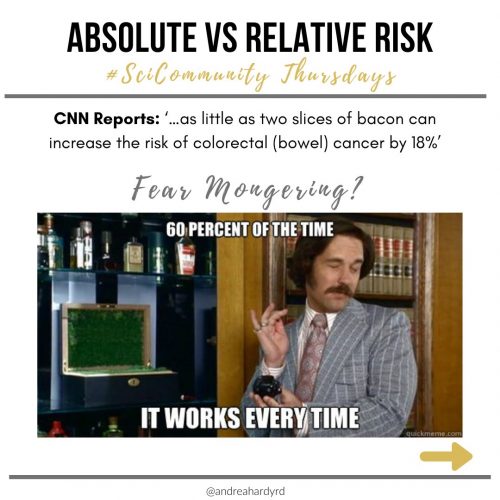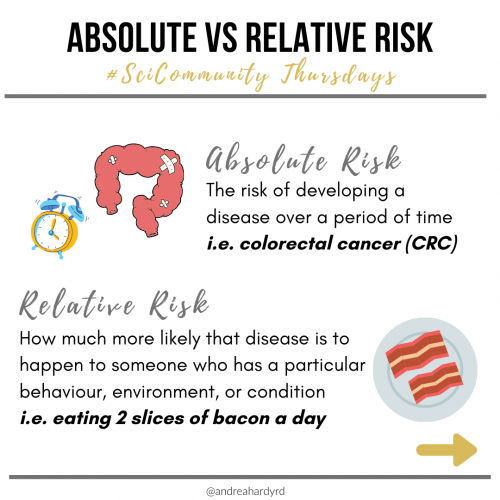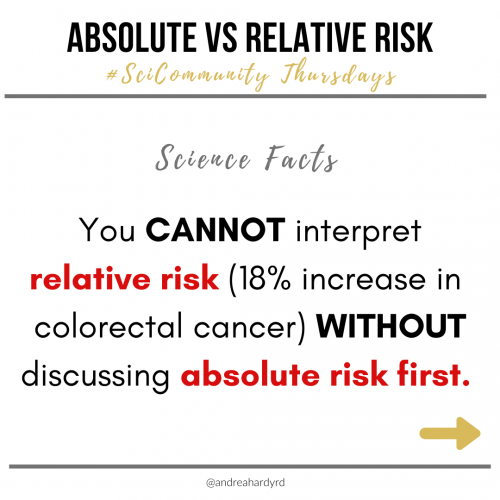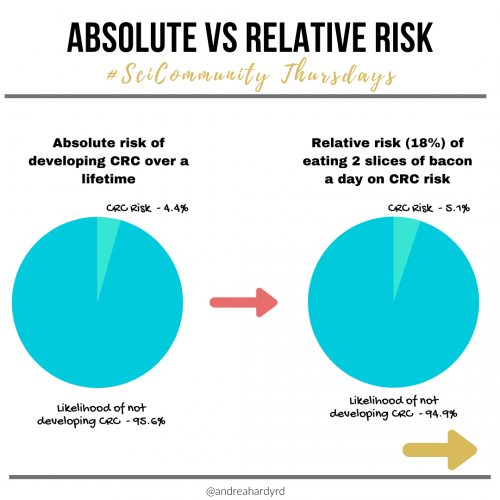On Instagram @AndreaHardyRD, I talk all about how important it is to understand the difference between relative and absolute risk.
CNN Reports: ‘…as little as two slices of bacon can increase the risk of colorectal (bowel) cancer by 18%’????????????⠀
⠀
This is not only really bad reporting, it’s also REALLY common. How many nutrition headlines in the news read like this? Answer? Many. ⠀
⠀
Which is WHY understanding the difference between relative and absolute risk is SO important.⠀
⠀
✅Absolute risk✅⠀
The risk of developing a disease over a period of time.⠀
⠀
✅Relative risk✅⠀
How much more likely that disease is to happen to someone who has a particular behaviour, environment, or condition⠀
⠀
You CANNOT interpret relative risk without understanding absolute risk – which is why reporting solely on relative risk is the epitome of fear-mongering.⠀
⠀
Why?⠀
⠀
Take the 2 slices of bacon example. 2 slices of bacon increase the risk of colorectal cancer by 18%. But what was the risk in the first place that we’re increasing?⠀
⠀
At my current age, I have an (approximately) 0.07% risk of developing colon cancer over the next 10 years, assuming I am a fairly average individual. ⠀
⠀
If I eat 2 slices of bacon every day, my risk of developing colon cancer increases by 18% of my CURRENT risk. This equates to an increased risk of approximately 0.012%. So my risk goes up to 0.082%. Or approximately 0.012 of a percent. ⠀
⠀
Sounds a lot less scary right?⠀
⠀
I wrote a full article on this in 2015 – great to see it apply to our #SciCommunity post this week! (Link in profile to read)






Recent Comments